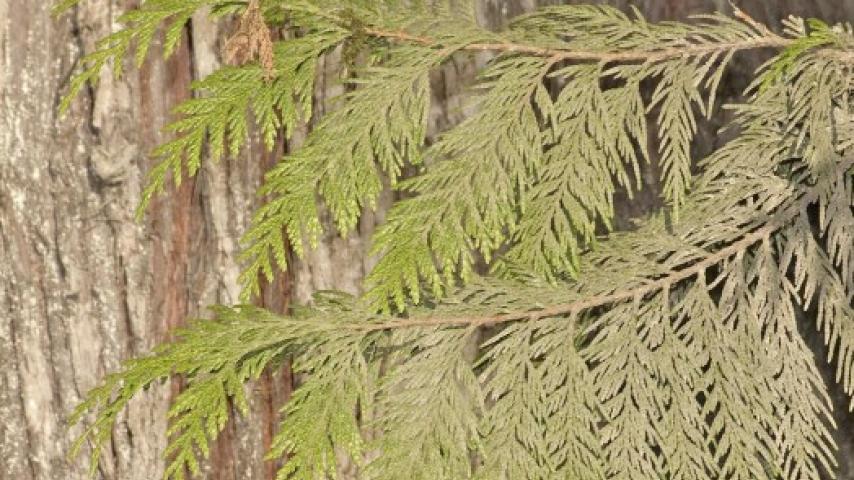Western Red Cedar (Thuja plicata)
Western Redcedar is another of the dominant trees in westside forests of the Pacific Northwest. These trees can grow to huge sizes, over 60 meters tall with a trunk diameter of over 4 meters. Only redwoods are larger among North American trees. The largest cedars are over 1000 years old.

KINGDOM Plantae - PHYLUM Coniferophyta - CLASS Pinopsida - ORDER Pinales - FAMILY Cupressaceae
This species is especially prominent in areas of moist soils, for example along water courses, because it tolerates a wider range of conditions than some other conifers. It also grows in drier soils, mixed with Douglas-firs and pines, from the lowlands to middle elevations in the mountains.
The flat sprays of needles of the cypress family Cupressaceae are very different looking from the more familiar cylindrical needles of the pine family Pinaceae. There are no other native cypresses in the Puget Sound lowlands, so the cedar is easily distinguished from the Douglas-firs, hemlocks, pines, firs, and spruces with which it may be found. The trunk of large trees is fluted, with stringy bark that comes loose in long strips.
Redcedar cones are easily recognized because they are quite small, about a centimeter long, and with only about 10 scales that spread wide when the cone ripens. The seeds are winged, adapted to be dispersed by wind, and each tree produces thousands of them
Older trees produce a chemical called thujaplicin that is a natural fungicide, so products made from the wood resist rotting for a very long time. Cedar chests (often just lined with redcedar) are valued as places to store clothing, as the tree produces aromatic oils that deter moths and carpet beetles.
This species played a very important part in the lives of Pacific Northwest native people. The bark was used for a great variety of uses, including clothing, rope, mats, and baskets. The long-lasting wood was used for canoes, houses, totem poles, and an amazing array of implements and tools that were used in all aspects of their lives. In fact, the importance of redcedar has been used to define a Northwest cultural area, and it is still much valued.
Although a large, slow-growing tree, Western Redcedar has long been in cultivation, and a number of horticultural varieties have been developed to appeal to the tastes of gardeners and landscapers. For example, the young trees (called giant arborvitae) grow rapidly and are used as visual screens at the edge of properties.